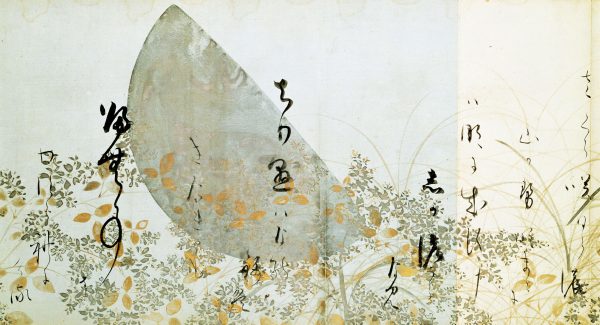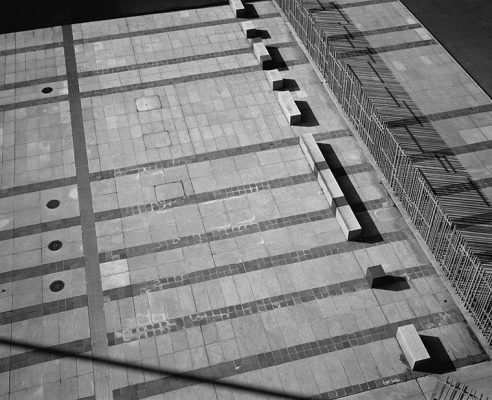What can an art magazine be? Today, as the publishing industry reassesses its role in the age of the internet, the pioneering art magazine Metronome provides an example of how a print publication can engage with a community of readers and contributors. While online publishing allows for ambitious publications that cater to a small audience, the ability of the web to reach anyone, anywhere makes such small-scale operations seem futile or unambitious.
The internet has modified our understanding of what publics are and can be: when distribution brings with it larger discussions about discourse and its limitations not because of physical accessibility, but because of a lack of shared points of access, the real achievement – and legacy – of a small magazine is in its provision of a space for dialogue rather than its creation of a public. This is a useful example – if not the ultimate one – for considering publishing as a curatorial practice. And with that, to suggest that the production of art magazines, both in print and online, can be a more nuanced, more open practice than the role assigned to it in the incessant conversations about the current state of publishing.
The director of one of the very few libraries in the United States to keep copies of Metronome emails me: ‘There are twelve issues total for Metronome,’ she writes. ‘The first issue in 1996 begins with “0” rather than “1” – one of the eccentricities of the publication.’ She attaches the library records, which include the following notes: ‘Edited Clémentine Deliss. Publication inter-culturelle des arts plastiques = Intercultural publication of the visual arts. Four no. a year. Later issues vary in size, format, and languages.’
Issue 0 of Metronome was published in 2,000 copies in 1996, in Dakar. Its first editorial read: ‘Metronome is the first edition of a new series of intercultural publications produced from Dakar and London. It proposes a debate from within the visual arts, interpolating artists, critics, philosophers, historians, aestheticians, curators, patrons, and art enthusiasts.’ At the time, Deliss, now director of the Weltkulturen Museum in Frankfurt, had just curated an exhibition at Whitechapel Gallery as part of Africa ’95, a season focused on contemporary art from Africa, of which she was the artistic director. She then stopped organising shows and came to define herself, as she puts it in a letter to Judith Ickowitz which serves as the editorial to Metronome 9, as a ‘curator who realised that exhibitions were not her medium’. Deliss’s objective to disseminate new ideas by artists working in diverse locations led her to a particular and to my knowledge unprecedented way of working: each issue of Metronome was produced in a different place, following a period of research on site with artists and writers she met there. Production – including printing – also took place locally. Twelve issues of Metronome were printed between 1996 and 2007 in locations including Dakar, Berlin, Basel, Vienna, Frankfurt, Oslo, Copenhagen, Portland, and Tokyo. Metronome Press, which Deliss founded with curator Thomas Boutoux in 2005, has published four novels, including the first edition of Tom McCarthy’s Remainder.
Metronome wasn’t a reflection of the places in which it was produced nor did it seek to provide an analysis of the visual works it included. What it aspired to offer was a critical locus for discourse. Metronome 0 was still marked with some attributes recognisable from other periodicals – it was introduced as the pilot issue for a new quarterly and had a price on its cover. While the first three issues (Dakar, 1996; London, 1997; Berlin, 1997) had a similar look – all large format with stapled pages, where visuals alone took over the front and text followed – later editions diverged from that structure. Metronome 3 (Basel, 1997) was a documentation of an event, Tempolabor, a conference about the labour of creative workers that took place at Kunsthalle Basel. Designed like an old-fashioned book whose pages had to be cut by hand, it included original work by artists and writers, as well as the edited transcript of Deliss’s attempt to draw together some unfinished conversations between artists and writers by inviting thirty-nine people to Basel for four days of discussion (among the participants were artists and curators including Charles Esche, Olaf Nicolai and Nicolaus Schafhausen). Metronome 4-5-6 (Edinburgh, Bordeaux, Frankfurt, Vienna, Biella, 1999) were compiled into one book-form issue, entitled ‘Backwards Translation’, that attempted to serve as a reference encyclopaedia for artists and artistic producers today; and Metronome 7 (Scandinavia, 2001) was a book and a CD, designed by Liam Gillick, which included interviews between Deliss and artists including Karl Holmqvist, Bjarne Melgaard and Ingrid Luche.
Metronome was a very particular publication: it never had a fixed identity, format, or even an address; a large section of each issue was dedicated to visuals; and the texts did not necessarily discuss visual art, but engaged the field of cultural production surrounding contemporary art – theory, philosophy, and criticism, but also fiction and experimental writing. In the spectrum of art publications Metronome falls far from the Artforums of the world, and as such expands the possibilities of a hybrid curatorial and editorial practice. An art magazine can be a platform for discussions in a way that exhibitions can’t be: because it allows writers and artists a space for reflection rather than presentation, but also because its serialised nature enables conversations that develop over time and for a reassessment or reaction to previous issues, and lastly, since a printed magazine does not have a fixed duration, unlike an exhibition.
Metronome‘s free form allowed artists, writers, and critics a space for in-depth consideration of subjects as diverse as art education, the role of fiction and literature in art, and translation and globalisation, while also encouraging a cross-cultural exchange by its particular attitude to the geography of publishing. Deliss’s emphasis on the local nature of the magazine also made it into a very intimate stage for sharing ideas, one enhanced by another distinct characteristic of the magazine: it was never formally distributed. Every contributor to the magazine received a large number of copies to circulate as they saw fit. All of which contrast it most sharply with one thing – the internet.
In the last few years, a good deal of critical research has been directed at the history of publishing in the arts (books by Gwen Allen and Philip E. Aaron & Andrew Roth among them), but it has focused on artists’ publications while the print initiatives of curators have gone mostly unnoticed. This is surprising at a moment when new magazines are added to the curatorial bookshelf (for example, The Exhibitionist and Manifesta Journal, both of which attempt to theorise and historicise the practice of curating). But there is little room in these publications for content or editorial lines that address the proximity of the editorial space to the curatorial one, which would seem useful at a time when the definition of curating is constantly being expanded – not by the overuse of the word ‘curated’, as in ‘curated wine list’, but rather, through the inflation of participants in curatorial endeavours.
Deliss’s idea of curating without working on exhibitions suggests a useful, less wine-list-y definition of what curating could be. She has definitely sketched that in Metronome, where the separation between text and visuals (so that images are independent and do not act as illustrations) and the collaborative working process are systematic for her thinking of the magazine as a curatorial project. When comparing Metronome to other curator-initiated publications, the fact that it has a different aspiration stands out: not to discuss an artistic scene, but be part of it; not to provide a reflection on art and curating, but to advance another space for these to be produced.
In that, Metronome seems closer in spirit to artists’s magazines like Aspen and Avalanche. The first, published in the 1960s in New York City, is an oft-cited example that has won a cult following: each issue of Aspen consisted of a boxed set of ephemera including objects such as vinyl records, super-8 reels, and postcards. It featured writers and artists like Brian O’Doherty, John Cage and Yoko Ono, and is now so revered that it is pretty regularly displayed in vitrines in the context of exhibitions like the Materializing Six Years: Lucy Lippard and the Emergence of Conceptual Art show at the Brooklyn Museum in 2012. Avalanche, published between 1970-76 by Liza Bear and Willoughby Sharp, was meant to be a gallery in a magazine and focused on presenting new work and contextualising it only with interviews and descriptions of artists’ processes. In thirteen issues of Avalanche its pages included the work of Vito Acconci (to whom issue six was dedicated), Bruce Nauman, Yvonne Rainer and Joseph Beuys (who was on the cover of issue one).
Both Aspen and Avalanche are identified with a certain New York scene – and contributed to its myth creation, especially in the case of Avalanche, the covers of which featured portraits of artists, always in black and white, always close-up, in a way comparable to musicians and movie stars. But, as is the case for Metronome, they did not intend merely to reflect an art scene but to partake in it: both magazines launched artistic and editorial careers and created, as well as documented, moments, movements and tendencies in art that continue to be of interest to curators and art historians today. They also contributed to the production and dissemination of knowledge beyond geographical borders (one manifest example: Barthes’ ‘Death of the Author’ was first published in Aspen in 1967).
The ongoing bid to historicise contemporary art has led to the aforementioned wave of new research on art publications, both as primary information for research on artists, but also as a way to broaden our understanding of the context in which artworks are made. A similar move is currently being made to analyse the records of curatorial practice. (This could be the academic contribution that the inflating number of curatorial studies programmes provide us with.) As part of said research, and in a comparable way to the study of art magazines as a way to further our understanding of artistic practice, we should be looking at publishing as a curatorial medium. This, in turn, would lead us to question what an audience or public is, and what it could be.
What does it mean for a curator to eschew the aspiration to enlarge his or her audience? For Metronome, this is a point of strength – knowing your audience personally brings you closer to engaging with it in a very immediate way. Distributing the magazine informally, on the basis of personal relationships, was a decision that came to define the nature of Metronome. And in a somewhat incongruous way, even its limited distribution was democratic in that the magazine was collaborative in its nature and relied on a sort of gift economy for its dissemination. In addition to that, every number included a list of the previous issues and their content: if you encounter one issue (granted, usually in a very particular visual arts context) you know who, when and where each preceding issue of Metronome was produced. One result of the strong authorship of Deliss’s editorial process is the awareness of the identity of the readership, which allows the creation of an intimate, long-standing dialogue. While it may be tempting to tie together the idea of opening up to a larger public with a certain democratic largesse, the public of more inclusive and less open-ended visual arts initiatives would have much less of an agency than the limited public exposed to Metronome. This may indicate Metronome’s successful specificity: that the production of a single issue of the magazine is also a complex method for building knowledge collaboratively.
So Metronome encourages dialogue, but only between a limited number of people in a particular field. Today it remains largely unavailable, which seems paradoxical when considering that, ideally, the publication’s audience should have been as dispersed as its identity was. The question of accessibility and elitism is important when considering Metronome: Could a magazine really inform artistic discourse when it comes out sporadically and retains a separatist attitude? Is it possible to inspire dialogue without allowing people into the conversation?
These are complex questions for any curator, but they are further complicated in the context of a magazine, especially when surveying the possibilities offered by the internet for contemporary art publishing. Offering content online, free and open to all, seems like the antithesis of what Metronome did. But its particular attitude towards print and distribution could still be a model as curators, editors and readers reassess what we do with publishing online. The relationship between the print and online presence of magazines is an ongoing discussion at editorial meetings and has led to numerous strategies – from identical print and online versions, through separate mobile apps, and up to the creation of unique content for print and web. For publishing, the internet seems both the most natural environment and a dizzying array of possibilities. Then why print magazines? And why do we see many online magazines print out the internet, launching either a print-on-demand system (e-flux journal) or a series of readers (both e-flux journal and Triple Canopy are good examples) reproducing their online content in printed form?
Part of this has to do with attention. While publishing online allows for any given piece to be multitextual by hyperlinking, the links send a reader away from any given text. The solitude that a print publication allows with its content is irreplaceable online. (This solitude is not unequivocally a good thing: it may satisfy advertisers, and allow for more coherent delivery of information in print, but it also limits the reader’s scope of references and ignores the kind of curiosity we have come to develop online, constantly checking for facts, accumulating further reading material, generating individualised networks of interests that stem from a given piece.) Print provides a more stable archive that would not be subjected to expired URLs and allow for conservation in libraries. It’s also, though, the weight of history. A magazine looks to its predecessors, wants to belong to a certain tradition. And that tradition, at least at the moment, is in print. And the possibilities of print as a medium are one of the central things a publication like Metronome explores. Only print allows for projects like Metronome. The more we look at screens, the more information we consume online, the more we value immediacy and connectivity – whereas a publication like Metronome lingers on the local, the process, the ongoing. And its informal distribution is based on a physical object that can be handed out, discussed, and preserved.
One of the outcomes of the ongoing discourse of online versus offline publishing is that it brought about a very close consideration of why we publish. In the visual arts, there’s this great tradition (or cliché) of artists, critics, and curators discussing their first encounter with the art of their generation on the pages of a magazine. (For a recent example, see Bob Nickas’s column in Artforum’s November 2013 issue, in which he wrote about being in middle school and discovering Robert Smithson via the cover of the September 1969 issue of Artforum.) We don’t need that anymore. No one sneaks copies of contemporary art magazines past the Iron Curtain. No teenager in the periphery of the art world needs glossy pages and high-resolution images. For that, we have the internet. But for models, we have print. We should be looking at historical precedents, and the example of Metronome – with its focus on locality at a time of rapid globalisation, on proximity and familiarity at an age of online readership, and its commitment to working on a small scale – provides one strategy through which to think of the future of publishing in the face of some instincts that the internet provokes in us: to work on too large a scale, and too quickly.




